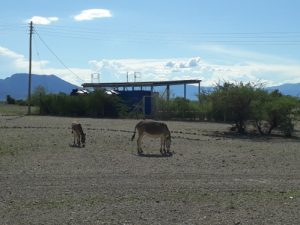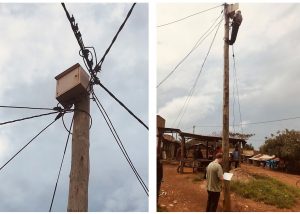
To date, it is estimated that around 840 million people, representing 12% of the global population (as of 2017), have no access to electricity with many more having no reliable electricity supply. Most of these people live in rural areas in sub-Saharan Africa (SSA) and south Asia. Overall access to electricity in SSA has increased to 44% in 2017 compared to 25% in 2000. As 80% of the SSA population lives in rural areas, extending the grid is prohibitively expensive and rural areas are unlikely to be served through this route in the near future. In addition, load-shedding and blackouts from unreliable national grids are estimated to lower GDP growth by 2%. The lack of access to electricity in the targeted countries and beyond hampers economic activity, trapping communities in poverty. Hence, innovative and less capital intensive solutions such as sustainable energy mini grid networks will be needed to alleviate these challenges, provide growth, and invigorate rural communities.
Expansion of rural electricity solutions is compromised by low population densities and very low incomes (affordability) coupled with low tariffs set by the subsidised utility network in urban areas. It is now widely accepted that mini grids (electrical power generation, transmission and distribution) have an important role to play in delivering electricity access to off-grid rural communities. The focus of this project is renewable energy driven electricity networks geared to promote the short and long-term sustainable growth in Sub Saharan Africa focusing on Kenya and Uganda. This research builds on our 10 years’ experience of research and development in delivering modular solar photovoltaic (PV) power generation and distribution systems in rural areas on these countries. We will build on such collaborations to create new and appropriate knowledge, and capacity building, focussing on sustainable and resilient local energy networks, including off-grid networks and their transition to the national grid. This research will address mini grid networks in various modes:
- Isolated networks,
- Networks connected to the national grid, and
- Multiple networks connected together and working jointly.
Clustering mini grids will form wider networks with greater stability and lower Levelised Cost of Electricity (LCOE), while linking such clusters to the national grid could provide support the near end of line utility network. This research will be underpinned by field studies on the e4D’s five existing mini grids in Kenya and Uganda, and will consider over 400 mini-grids in planning in these countries.
This research is structured to test and model the mini grid systems and their configuration to enable African households to thrive through optimised, flexible and upgradeable mini grid networks. Key understanding will cover, (a) exploration of options to cluster mini grids to form wider networks with greater stability and lower LCOE, (b) utilisation of high stability mini grids to support the near end of line utility network, (c) understanding the intermittent islanding operation of mini grid networks and (d) Demand side management approaches related to consumption profiles and mini grid network stability.
|
|
|
|
|
|
|
|
For more information about this project please click here …






